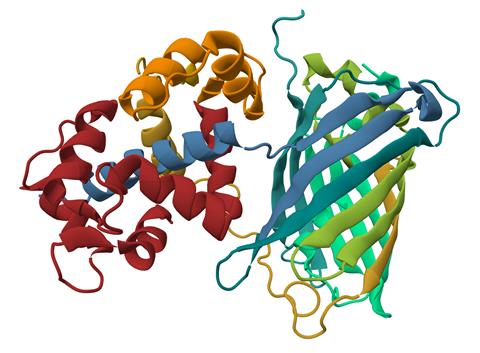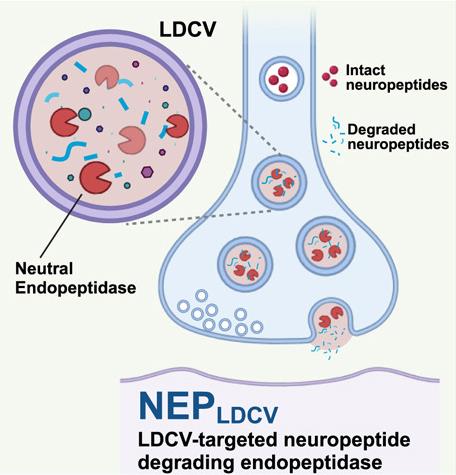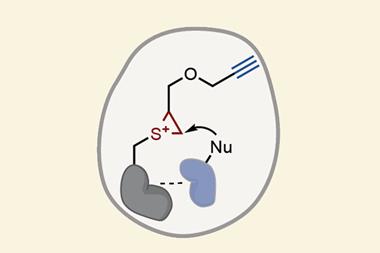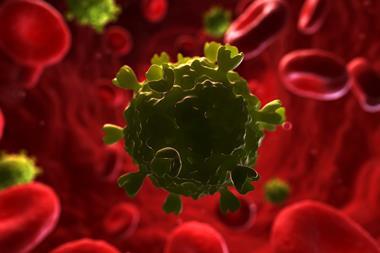Recent advances in measurement techniques have shed light on the different roles of various biomolecules during frightening and stressful situations. Anna Demming looks at how it may lead to new therapeutic interventions for conditions like PTSD
-
Neuropeptides as key messengers: Recent research challenges the traditional view of neuropeptides as mere modulators, showing they can act as primary transmitters in fear and panic responses, with distinct molecular pathways for each.
-
PACAP and panic: Studies in mice reveal that PACAP-producing neurons in the brainstem are crucial for panic behaviour, operating independently from fear circuits and interacting with them in complex ways.
-
Orexin’s role in atress: Orexin neuropeptides, originally linked to wakefulness and appetite, are now shown to mediate physiological stress responses like heart rate and breathing changes, reinforcing their role in the fight-or-flight mechanism.
-
Endocannabinoids and memory generalisation: Endocannabinoids disrupt the specificity of fear memories under stress by allowing more neurons into the memory engram, a mechanism that may explain PTSD symptoms and influence treatment strategies.
This summary was generated by AI and checked by a human editor
‘Any noise at all and I can react,’ says Paul on a video by the mental health charity Mind. He is sharing his experiences with others who have similar mental health diagnoses. ‘My heart will go fast … I’ll jump and my nerves will tingle all down my back.’
Physiological changes like this prime the body for a fight or flight response to a perceived threat, but they can be complex. In this instance, Paul is not describing his response to a scenario that might commonly be regarded as hazardous. He lives with post-traumatic stress disorder (PTSD), whereby repercussions of a past traumatic experience result in long-term symptoms of fear and anxiety, sometimes in response to apparently benign events that trigger flashbacks of the trauma. It is one of several mental health conditions where scientists have long suspected a generalising of memories due to the stress of a traumatic experience plays a role – details of the traumatising incident are smudged out, so that fear responses are aroused not just by repeat scenarios but by anything loosely similar.
‘It’s probably very adaptive, right?’ says Sheena Josselyn, a neuroscientist at the Hospital for Sick Children in Toronto, Canada. ‘Something really bad happens to you, so you start to avoid everything around that, but it becomes a problem when you do that too much.’
Whether a situation arousing fear and anxiety is imagined, misconceived or a genuine hazard, the physical symptoms are very real as Paul describes. What is more, for many of these physical responses to situations that prompt fear, the physiological chemistry is now being pinned down. It turns out that small molecule neurotransmitters such as glutamate are not the only messengers in these processes. Although over recent decades neuropeptides have often been considered to play more of a supporting role, acting as modulators that fine-tune neurotransmission, new research is showing that in some circuits, they may act as the primary transmitters conveying key signals. The apparently similar conditions of panic and fear have been found to stem from significantly different molecular pathways that may even inhibit each other, and as Josselyn and collaborators reported recently, probing the mechanism by which memories prompting fear become generalised is also yielding insights that may have implications for mental health treatments. The nitty gritty of the chemistry of fear is unfolding.
For the past few decades, neuroscience research has largely focused on classical neurotransmitters like glutamate and GABA (gamma aminobutyric acid) – small molecules produced at nerve endings and released from so-called synaptic vesicles. In part this has been because of the powerful tools available to study their fast synaptic transmission. Sung Han, a neuroscientist at the Salk Institute for Biological Sciences in California, US, researches neuropeptides. He notes that in the 1970s and 1980s, neuropeptides generated substantial interest as newly discovered signalling molecules, but that progress slowed due to the technical challenges of directly studying peptidergic transmission in vivo. ‘As a result, neuropeptides were often viewed primarily as modulators of neurotransmission, rather than as primary transmitters in their own right,’ he explains. ‘That may be true in many systems – but not necessarily all.’
Han suggests that the discoveries of the role of GABA in long-term potentiation, a learning mechanism whereby synaptic connections are strengthened through activity, may have contributed to the shift in focus. With that came the perception of neuropeptides as primarily signal modulators, while neurotransmitters do the heavy lifting of signal transmission. Han also points out that neurotransmitters act fast, taking just milliseconds to get around the body, which would seem an important attribute for messengers of the nervous system. ‘People think that, for how the brain works, it should be really fast, like your thinking, your cognitive action,’ he adds. Nonetheless there are now an increasing number of reports demonstrating neuropeptides taking on the role of messenger too.
Fear versus panic
Peptides are larger molecules stored in so-called large dense core vesicles. Although there are now reports suggesting that peptides can act on timescales of around a second, this is still slower than the millisecond response speeds of neurotransmitters. However, Han and his co-workers had noted the abundance of a certain peptide – pituitary adenylate cyclase-activating polypeptide (PACAP) – in the part of the brain that regulates breathing and heart rate and so on, the parabrachial nucleus (PBL). The same part of the brain is also activated in conditions that induce panic. As a result, when he and his team investigated signal transmission mechanisms for panic responses in that part of the brain, they found themselves reporting the potential role of PACAP-producing neurons in generating panic behaviour in mice in 2023.
The team monitored the activity of PACAP-producing neurons using GCaMP6, a calcium indicator that fluoresces in response to elevated intracellular calcium, providing a proxy for neuronal firing. This method indirectly reflects the likelihood of peptide release, since neuropeptide secretion from dense-core vesicles is calcium-dependent and typically requires sustained activity.

They studied mice in panic-inducing situations; for instance, they exposed the mice to air comprising 10% carbon dioxide, much higher than the usual 0.04% and a common experimental tool for inducing panic. In a separate experiment they injected mice with a complex anxiety- and panic-inducing drug called FG-7142. Sure enough, in both instances, the mice responded with decreased mobility and increased heart and breathing rates suggesting a state of panic, and the activity of PACAP-producing neurons increased. They also elicited similar panic-like behaviour by optogenetically activating PACAP-producing neurons using light to selectively trigger their firing, which induces PACAP release. By inhibiting the PACAP-producing neurons, they diminished panicked behaviour, and they identified a PACAP receptor – PAC1R – as the downstream target of the PACAP-producing neurons. The study demonstrated that activation of PACAP neurons in the PBL was both ‘necessary and sufficient’ to generate panic behaviour.
A twist in the tale arose when the team monitored PACAP activity in response to stimuli commonly used to prompt fear, such as a ‘looming visual stimulus’. Han and his team noted that alongside fear responses such as freezing – a behaviour widely associated with fear, as opposed to the diminished mobility during an episode of panic – the activity of PACAP-producing neurons in the PBL decreased.
Panic is often considered a kind of fear or anxiety. However, whereas a part of the brain known as the amygdala is widely associated with generating fear and panic responses, as Han points out, ‘People without the amygdala, they still generate a panic, but they don’t have fear.’ The study by Han and his team identified a specific PACAP-expressing brainstem pathway that drives panic-like responses, suggesting that peptidergic signalling underlies panic that is distinct from the signalling mechanism behind conditioned fear. ‘Interestingly, the panic centre and fear centre are interacting with each other,’ he tells Chemistry World.
Waking up to orexin peptides
In fact, the plot has been thickening with respect to the role of neuropeptides in the mediation of fear responses for a while, and the discovery of the orexin (also called hypocretin) neuropeptides in 1998 turned out to be a pivotal moment. Although these peptides were first associated only with consciousness and appetite, later studies linked them to a number of physiological changes associated with fear, including the regulation of heart rate, breathing and pain processing. Orexin-containing neuron terminals are very widely distributed but the cell bodies are confined to just a few brain regions, that are also closely associated with the fight or flight response, that is, the area sometimes termed ‘the defence area’ – perifornical area (PFA) and the dorsomedial hypothalamus (DMH) – and the lateral hypothalamic area (LHA).
Tomoyuki Kuwaki is an emeritus professor at Kagoshima University in Japan. He began his career focused on homeostasis but shifted his attention to how stress affects the regular rhythms of the body – such as heart rate, and breathing – that are maintained in homeostasis. When he heard of the orexin neuropeptides and their co-location in the defence area of the brain, he decided to ‘examine the idea that orexin may be responsible for the fight or flight response’.
In experiments with orexin knockout mice – using an approach demonstrated previously that replaces the gene that encodes the orexin neuropeptides – they found that fearful situations caused much less change in heart rate and breathing, locomotor activity, and baroreceptor activity (the body’s inherent blood pressure sensors). Orexin knockout mice also seemed to register a lower analgesic response in frightening situations than wild type mice. In addition, when Kuwaki and his collaborators tracked orexin neuropeptide release using GCamp6 fluorescence, they found it was released in response to perceived threats.
Kuwaki sees the role of orexin neuropeptides in responding to stress as an extension to their role in initiating wakefulness after sleeping. Heart rate, breathing and blood pressure all increase on waking up – in the wild, this usually prompts foraging for food as well – and then when a stressful situation arises, heart rate, breathing and blood pressure all increase again, like a sliding scale in the same process.
Eyes on the peptides
One of the challenges in monitoring peptides directly – as opposed to monitoring general neural activity through GCaMP6 fluorescent calcium detection – is the sheer range of neuropeptides to track. Whereas there are just a handful of different neurotransmitter molecules, the different types of peptides exceed a hundred, with many researchers suspecting that there are more neuropeptides yet to be discovered. ‘To monitor the action of all these different peptides, you need a sensor for each individual neuropeptide, if you develop a sensor that detects certain molecules,’ explains Han. Exacerbating this challenge are the concentrations of neuropeptide release, which are much lower than the concentrations of glutamate release, for instance.
In 2024, Han and his group were able to show they could monitor peptide release directly by targeting a pH-sensitive fluorescent protein to the inside of large dense-core vesicles, where the pH is around five. They were able to detect vesicle fusion and peptide release as during that process the pH rapidly rises toward neutrality. ‘Without the pH sensor, we couldn’t do it,’ he says, emphasising the value of the previously developed pH sensor.

Using their pH monitoring tool, Han and his team took a close look at the possible role of neuropeptides in mediating the fear response. They showed that neuropeptides, not glutamate, were predominantly released in response to unconditioned stimuli such as footshocks, suggesting that peptidergic transmission plays the primary role in driving aversive responses in this pathway. They selectively silenced neuropeptide transmission using a genetically encoded peptidase (NEPLDCV), which degrades peptides within vesicles. ‘This silencing suppressed threat learning and pain-related behaviours, while glutamate signalling remained intact – indicating that neuropeptides, not glutamate, serve as the primary transmitters in this circuit,’ says Han. However, he adds that this does not rule out a role for glutamate in other aspects of fear behaviour, such as memory retrieval or modulation of downstream activity — areas that warrant further investigation.
These findings suggest that peptidergic neurons can act as primary transmitters in specific circuits, particularly under high-frequency activity that favours dense-core vesicle release. The distinction between neuropeptides as modulators and neurotransmitters as fast messengers is no longer so clear cut.
Vague stressed memories
One type of neurotransmitter that has attracted particular interest in fear responses is the endocannabinoids. While also responsible for regulating appetite, Josselyn and her collaborators showed that endocannabinoids play a leading role in the process that leads to generalised memories in response to a stressful situation.
During an experience, excited neurons form a network known as an engram, which is a physical record of the experience in the mind. However, neurons are not promoted into these engrams indiscriminately.
‘There are these sort of velvet rope neurons that keep the engram nice and small,’ says Josselyn, describing the role of parvalbumin-positive (PV+) lateral amygdala interneurons. The PV+ cells inhibit neurons from forming part of an engram, which limits how large and dense the engram becomes, giving the memory its specificity. Josselyn and her collaborators were able to show that endocannabinoids block this inhibitory process. ‘They sort of open the velvet rope so everybody can get into the club,’ she says.
Josselyn and her collaborators worked with mice trained to expect an electric shock in response to a certain tone of sound. Some mice were trained under the stress of being restrained while others were not, and as expected those that had trained under stress responded with fear by freezing at the sound of any tone whereas those trained free from any stress only froze when they heard the specific tone of sound that had previously pre-empted a shock.
We now have a much better understanding of how fear memory generalisation works in the brain
By inhibiting the endocannabinoid synthesis they were able to restore the specificity of the response of the mice only to the tone of sound that pre-empted an electric shock during training. They could also restore the specificity of memories formed by increasing activity in PV+ neurons so that they were still active enough to inhibit neurons from joining an engram even when exposed to endocannabinoids.
Although this threat memory generalisation under stress was well recognised and people had even suspected the role of endocannabinoids in the process, this was the first time an endocannabinoid-based mechanism had been demonstrated. Josselyn also attributes this success to the ‘burst of these new tools in the brain’ that allowed them to tag which neurons were active and so on, and ‘made all of this possible.’
The research may be relevant to treatments because cannabis has – albeit controversially – been recommended by some as a possible treatment for PTSD. These results suggest the possibility that cannabis may not be beneficial for PTSD, and in any case as Josselyn points out, ‘The evidence is a little mixed as to whether cannabinoids would be helpful.’ She explains that cannabinoids exert complex effects on several brain systems, so more understanding of these mechanisms is needed.
What is clear is that refining our picture of the chemistry of fear helps. ‘We now have a much better understanding of how fear memory generalisation works in the brain,’ says Josselyn. ‘This is the absolute crucial step towards developing new and better treatments for disorders such as PTSD.’
Anna Demming is a science writer based in Bristol, UK



![Chemical structure of FG-7142, N-Methyl-5H-pyrido[3,4-b]indole-2-carboxamide](https://d2cbg94ubxgsnp.cloudfront.net/Pictures/web/n/d/i/fg7142_369361.svgz)
















No comments yet